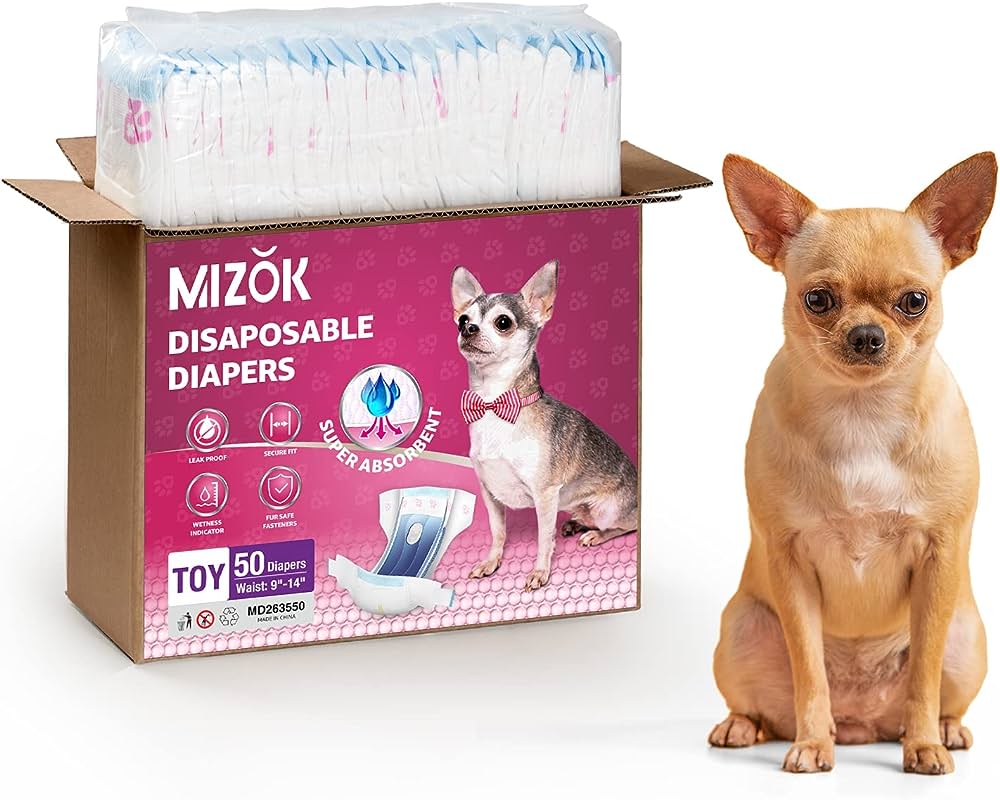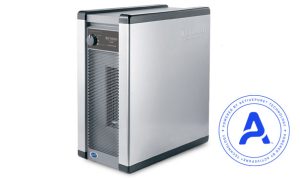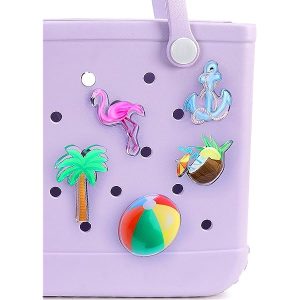Contents
- Understanding Incontinence In Dogs
- The Benefits Of Using Dog Pads For Incontinence
- Proper Usage And Placement Of Dog Pads
- Comparing Different Brands Of Dog Pads
- Training Your Dog To Use Dog Pads
- Additional Tips For Managing Incontinence In Dogs
- Frequently Asked Questions About Dog Pads And Incontinence
- Frequently Asked Questions Of Dog Pads For Incontinence
- Conclusion
Dog pads for incontinence are absorbent pads designed to manage urine leaks in dogs. They provide a convenient and hygienic solution for dogs with bladder control issues.
These pads are made with materials that quickly absorb and lock in the moisture, preventing leaks and odors. Perfect for puppies in training, aging dogs, or dogs recovering from surgery, dog pads for incontinence are an essential tool for pet owners looking to maintain a clean and comfortable home environment.
With their multiple layers and waterproof backing, these pads offer reliable protection and are easy to clean up, making them a valuable investment for any pet owner.
Understanding Incontinence In Dogs
Incontinence in dogs is a common issue, but dog pads can help manage the problem effectively. These pads provide a convenient and hygienic solution for pet owners, offering absorbent layers to keep your floors clean and your furry friend comfortable.
Incontinence in dogs can be a challenging condition to manage. It refers to the involuntary leakage of urine from a dog, which can cause discomfort and inconvenience for both the pet and their owner. Understanding the causes, signs, and effects of incontinence is crucial in order to ensure the well-being of our furry friends.
Let’s delve into this topic further.
Common Causes Of Incontinence In Dogs:
- Hormonal imbalances: Changes in hormone levels, such as a decrease in estrogen or an increase in testosterone, can lead to weakened urinary sphincter muscles, resulting in incontinence.
- Urinary tract infections (UTIs): Infections in the urinary tract can cause irritation, inflammation, and disruption to normal urinary function, leading to urine leakage.
- Age-related factors: As dogs age, their muscles can weaken, including those responsible for holding urine. This can contribute to incontinence, particularly in senior dogs.
- Neurological disorders: Conditions that affect the nervous system, like spinal cord injuries or nerve damage, can disrupt the control of the bladder, leading to incontinence.
- Congenital abnormalities: Some dogs are born with anatomical abnormalities that affect the urinary system, making them more susceptible to incontinence.
Recognizing The Signs And Symptoms:
- Frequent and excessive urination: Dogs with incontinence may urinate more frequently than usual, often in small amounts.
- Damp or wet fur around the genital area: Constant urine leakage can result in damp or wet fur around the dog’s genital region, which may have a distinct odor.
- Urinary accidents indoors: Dogs with incontinence may have accidents inside the house, even if they have been house-trained in the past.
- Skin irritation and infections: Constant exposure to urine can cause skin irritation and increase the risk of urinary tract infections.
The Impact Of Incontinence On A Dog’S Overall Comfort:
- Discomfort and skin issues: Incontinence can lead to skin irritation, rashes, and even painful urinary tract infections, causing discomfort and distress for the dog.
- Reduced quality of life: Dogs may become embarrassed or anxious about their inability to control their bladder, resulting in a decrease in their overall enjoyment of life.
- Potential secondary health concerns: Incontinence can predispose dogs to urinary tract infections and other related health issues if not managed properly.
- Increased caregiver responsibilities: Owners of incontinent dogs may find themselves having to clean up after accidents more frequently, which can be time-consuming and emotionally taxing.
Understanding the underlying causes of incontinence in dogs and recognizing the signs and symptoms are key steps towards addressing this condition effectively. By providing appropriate care and using products like dog pads for incontinence, we can enhance the comfort and well-being of our beloved canine companions.
The Benefits Of Using Dog Pads For Incontinence
Dog pads for incontinence offer a convenient solution for pet owners. These pads provide a hygienic and absorbent surface for dogs, helping to manage accidents and keep homes clean. With the benefits of easy cleanup and odor control, dog pads can help maintain a comfortable and stress-free environment for both pets and their owners.
How Dog Pads Provide Comfort And Convenience For Both The Pet And The Owner
Using dog pads for incontinence comes with several benefits that ensure comfort and convenience for both your pet and you as the owner:
- Absorbency: Dog pads are designed to absorb and lock in moisture quickly, preventing any leakage. This feature helps keep your pet dry and comfortable, reducing the risk of skin irritation and discomfort.
- Odor control: Dog pads are equipped with odor-control properties, effectively trapping and neutralizing unpleasant smells. This feature is essential for maintaining a fresh and clean environment in your home, eliminating any potential embarrassment or discomfort caused by lingering odors.
- Convenience for the owner: Dog pads provide a convenient solution for managing your pet’s incontinence. They eliminate the need for frequent cleaning and laundry while offering a hygienic alternative to traditional training methods. With dog pads, you can easily dispose of the used pad and replace it with a fresh one, saving you time and effort.
- Comfort for your pet: Using dog pads allows your pet to stay in familiar surroundings, such as your home, without feeling stressed or anxious about accidents. The soft and absorbent surface of the pads provides a comfortable and familiar spot where your pet can go when they need to relieve themselves.
- Prevention of accidents: Dog pads play a crucial role in preventing accidents and protecting your floors and furniture from potential damage. By providing a designated area for your pet to use, you can contain any accidents and minimize clean-up efforts.
Choosing the right size and type of dog pads for your pet is also important to ensure maximum effectiveness and convenience. Consider the following factors:
- Size: Select dog pads that are suitable for your pet’s size. Smaller pads may be suitable for puppies or small breeds, while larger pads are required for larger dogs.
- Material: Dog pads come in various materials, such as disposable or washable options. Consider your pet’s specific needs and lifestyle when choosing the type of pads. Disposable pads offer convenience and easy disposal, while washable pads may be more cost-effective and environmentally friendly in the long run.
- Adhesive backing: Some dog pads have adhesive backing, which helps keep them in place, preventing any shifting or movement that could lead to accidents.
Dog pads provide comfort and convenience for both your pet and you as the owner. The absorbency and odor control features ensure a hygienic and pleasant experience, while the right size and type of pad can cater to your pet’s specific needs.
Investing in dog pads for incontinence can significantly improve the quality of life for you and your furry friend.
Proper Usage And Placement Of Dog Pads
When dealing with dog pads for incontinence, it is essential to understand the proper usage and placement. Correct positioning in strategic areas can help prevent accidents and ensure your dog’s comfort.
Dog pads can be a valuable tool for managing incontinence in your furry friend. However, in order to effectively use these pads, it’s crucial to understand the proper usage and placement techniques. Follow this step-by-step guide to ensure that you are making the most of dog pads for your pet:
- Choose the right location: Find a designated area in your home where you will place the dog pads. This should be a convenient and easily accessible spot for your dog. It could be a bathroom, laundry room, or any other area that is easy to clean and maintain.
- Introduce your dog to the pad: If your dog is new to using dog pads, it’s important to introduce them gradually. Place the pad in the designated area and encourage your dog to explore it. You can place treats or toys on the pad to make it more appealing to your furry friend.
- Establish a routine: Dogs thrive on routine, so it’s essential to establish a consistent schedule for using the dog pads. Take your dog to the designated area at regular intervals throughout the day, especially after meals, naps, or physical activity. Consistency will help your dog understand that the pad is the appropriate place for elimination.
- Reward positive behavior: Whenever your dog successfully uses the dog pad, make sure to praise and reward them. Positive reinforcement encourages repeat behavior and reinforces the idea that using the pad is a positive experience.
Tips For Ensuring The Pad Stays In Place
To prevent the dog pad from moving or slipping, follow these helpful tips:
- Use a non-slip backing: Look for dog pads that come with a non-slip backing. This feature ensures that the pad stays in place, even during active use.
- Secure the pad: If the pad doesn’t have a non-slip backing, use adhesive or tape to secure it to the floor. This will prevent your dog from accidentally moving or flipping the pad while using it.
- Consider a holder or tray: Investing in a holder or tray specifically designed for dog pads can provide added stability. These holders often come with raised edges that prevent any liquid from spilling over.
- Clean and replace regularly: Regularly clean the area around the dog pad to remove any spills or messes. This not only maintains hygiene but also prevents slipping caused by liquids on the floor. Additionally, replace the dog pad as needed to ensure your pet has a clean and comfortable surface.
Importance Of Regular Pad Changes For Hygiene And Comfort
Regularly changing the dog pads is vital for both hygiene and your pet’s comfort. Here’s why:
- Hygiene: Frequent pad changes help maintain cleanliness and prevent odors in your home. It’s essential to remove any waste promptly and replace the pad to minimize bacterial growth.
- Comfort: Dogs appreciate a clean and fresh environment. Changing the pad regularly gives your pet a comfortable and pleasant experience, as they won’t have to use soiled or saturated pads.
Remember, proper usage, secure placement, and timely pad changes are essential for effective management of incontinence using dog pads. By following these guidelines, you can provide your furry companion with a clean and comfortable space to relieve themselves.
:max_bytes(150000):strip_icc()/best-dog-diapers-5089770-c23c86ca017f4664ab0e1641fc6fc10b.jpg)
Credit: www.thesprucepets.com
Comparing Different Brands Of Dog Pads
Comparing different brands of dog pads for incontinence can help pet owners find the best solution for their furry friends’ needs. With a wide range of options available, it’s essential to consider factors like absorbency, durability, and size to ensure maximum comfort and effectiveness.
An Overview Of Popular Dog Pad Brands
- Brand A:
- Features:
- Leak-proof design to prevent accidents from seeping through.
- Quick-drying surface for maximum comfort.
- Adhesive backing keeps the pad securely in place.
- Available in multiple sizes to suit different dog breeds.
- Specifications:
- Size dimensions: Small (18″x24″), Medium (24″x24″), Large (24″x36″).
- Absorbency capacity: Up to 3 cups of liquid.
- Scented or unscented options for odor control.
- Brand B:
- Features:
- Heavy-duty construction for durability and strength.
- Highly absorbent core keeps your floors clean and dry.
- Odor-neutralizing technology eliminates unpleasant smells.
- Non-slip bottom prevents pad movement.
- Specifications:
- Size dimensions: Regular (22″x22″), Extra Large (28″x34″).
- Absorbency capacity: Up to 6 cups of liquid.
- Leak-proof edges to prevent leakage and tracking.
- Brand C:
- Features:
- Extra-large size for maximum coverage and protection.
- Multi-layer design for ultimate absorbency.
- Built-in attractant to encourage your dog to use the pad.
- Quilted top layer for added comfort.
- Specifications:
- Size dimensions: Extra Large Plus (36″x28″).
- Absorbency capacity: Up to 8 cups of liquid.
- Leak-proof backing to prevent damage to floors.
Features And Specifications To Consider When Selecting A Brand
- Size:
- Choose a size suitable for your dog’s needs and space available.
- Consider the dimensions and coverage area of the pad.
- Absorbency Capacity:
- Determine the amount of liquid the pad can hold.
- Match it with your dog’s incontinence level.
- Leak-proof Design:
- Ensure the pad has a reliable barrier to prevent leaks.
- Look for features like leak-proof edges or backing.
- Odor Control:
- Some pads offer scented options or odor-neutralizing technology.
- Consider your preference for managing unpleasant smells.
Reviews And Recommendations For The Best Dog Pads For Incontinence
- Customer Review A:
- “Brand A worked wonders for my senior dog’s incontinence. The pad stayed in place and prevented leaks, giving us peace of mind.”
- Customer Review B:
- “Brand B’s heavy-duty construction and high absorbency were perfect for my large breed. No more messes on my floors!”
- Customer Review C:
- “Brand C’s extra-large size and excellent absorbency have been a game-changer for my incontinent pup. Highly recommended!”
- Veterinary Recommendation:
- According to Dr. Smith from ABC Animal Hospital, “I often suggest Brand B to my clients with incontinent dogs. Its durability and odor control make it a reliable choice.”
- Dog Trainer Tip:
- Dog trainer Lisa recommends Brand C for training purposes. “The built-in attractant helps with potty training, making it easier for dogs to understand where to go.”
Remember, each dog is unique, so it may take some trial and error to find the perfect dog pad brand for your furry friend’s incontinence needs.
Training Your Dog To Use Dog Pads
Looking for a solution to your dog’s incontinence? Train them to use dog pads! This simple method helps keep your home clean and your furry friend comfortable.
Techniques For Introducing Your Dog To Using Dog Pads
Introducing your dog to using dog pads can be a process that requires patience and consistency. By following these techniques, you can help your dog become comfortable with using pads for incontinence:
- Gradual approach: Begin by placing the dog pad near the designated bathroom area. Gradually move the pad closer to the desired location over time. This allows your dog to get accustomed to the pad’s presence.
- Positive association: Encourage your dog to explore the pad by placing treats or toys near it. This creates a positive association with the pad and makes it more inviting.
- Frequent direction: Direct your dog to the pad consistently, especially after meals or when you notice signs of needing to relieve themselves. This helps establish the pad as the go-to spot for bathroom needs.
Positive Reinforcement Methods For Encouraging Proper Usage
Positive reinforcement is an effective way to encourage your dog to use dog pads appropriately. Here are some methods to employ:
- Rewards: Whenever your dog successfully uses the pad for bathroom needs, reward them with praise, petting, or treats. This reinforces the desired behavior and helps them understand the significance of using the pad.
- Verbal cues: Use consistent and encouraging verbal cues like “toilet time” or “go potty” to associate the desired action with the pad. Repeat these cues during the training process to reinforce the connection.
- Clicker training: Consider using a clicker to mark the moment your dog uses the pad correctly. Follow the click with a reward to reinforce the behavior. This method helps create a clear link between using the pad and receiving positive reinforcement.
Addressing Challenges And Troubleshooting During The Training Process
Training your dog to use dog pads may come with some challenges. Here are a few common obstacles you may encounter and how to address them:
- Accidents outside the pad: If your dog has accidents outside the pad, avoid punishment as it may confuse or deter them. Instead, calmly clean up the mess and gently redirect them to the pad while offering verbal encouragement.
- Resistance or fear: Some dogs may initially resist or fear using the pad. In such cases, go back a step and reintroduce the pad gradually, using positive reinforcement and patience. Offer plenty of praise and rewards when they approach or step on the pad.
- Inconsistency: Consistency is crucial during the training process. Stick to a routine when directing your dog to use the pad and reinforce positive behavior consistently. This will help them understand the expectations and establish a habit.
Remember that every dog is unique, and the training process may vary. Be patient, consistent, and provide positive reinforcement to help your dog successfully adapt to using dog pads for incontinence.
Additional Tips For Managing Incontinence In Dogs
Discover additional tips for effectively managing incontinence in dogs, including the use of dog pads specifically designed for this purpose. Protect your floors and make clean-up easier with these helpful solutions.
Diet And Nutrition Considerations For Dogs With Incontinence:
- Feeding a balanced diet is crucial for dogs with incontinence as it can aid in maintaining their urinary health and overall well-being.
- Ensure your dog has access to fresh water at all times to prevent dehydration, which can worsen incontinence symptoms.
- Consider incorporating high-quality dog food formulated for urinary health, as it may contain ingredients that promote bladder health and control urine leakage.
- It may be helpful to feed your dog smaller, more frequent meals throughout the day to reduce the volume of urine produced at one time.
- Avoid feeding your dog foods that are known to irritate the urinary system, such as spicy or highly processed foods.
- Consult with your veterinarian to determine if your dog would benefit from any specific dietary supplements to support bladder function and reduce incontinence symptoms.
Medications And Supplements That Can Help Manage Incontinence:
- Your veterinarian may prescribe medications such as phenylpropanolamine or hormone replacement therapy to treat underlying causes of incontinence or manage its symptoms.
- Diuretics may be prescribed to reduce urine production in dogs with excessive urine output due to conditions like diabetes or kidney disease.
- Some supplements, such as cranberry extract or omega-3 fatty acids, may provide additional support for urinary health and reduce inflammation in the urinary tract.
- Herbal remedies like corn silk or marshmallow root may also be recommended to soothe the urinary system and alleviate incontinence symptoms.
- Always consult with your veterinarian before starting any medications or supplements for your dog and follow their recommended dosage instructions.
Lifestyle Modifications To Improve Your Dog’S Comfort And Quality Of Life:
- Provide your dog with easy access to outdoor areas for frequent bathroom breaks, especially if they struggle with mobility issues.
- Use dog pads or diapers specifically designed for incontinence to manage urine leakage and keep your dog clean and comfortable.
- Establish a consistent routine for bathroom breaks and reinforce good behavior with praise and rewards.
- Monitor your dog’s weight and ensure they maintain a healthy body condition, as excess weight can put additional strain on the urinary system.
- Create a calm and stress-free environment for your dog, as stress or anxiety can exacerbate incontinence symptoms.
- Regular exercise tailored to your dog’s abilities can help maintain muscle tone and promote overall bladder health.
- Consider implementing bladder-strengthening exercises, such as gently squeezing and releasing your dog’s pelvic muscles, known as Kegel exercises.
- Regular veterinary check-ups are essential to monitor your dog’s condition, adjust treatment plans if necessary, and address any new concerns that may arise.
Frequently Asked Questions About Dog Pads And Incontinence
If you’re curious about dog pads for incontinence, this FAQ guide covers common questions and concerns. Discover the benefits of using dog pads to manage incontinence and find answers to frequently asked questions.
Dog pads for incontinence are an essential tool for pet owners dealing with urinary problems in their furry friends. As a responsible pet owner, it’s important to address any concerns or inquiries you may have about dog pads for incontinence.
In this section, we will discuss some frequently asked questions and provide concise answers and explanations to help you better understand this topic.
Common Concerns And Inquiries Regarding Dog Pads:
- Are dog pads necessary for incontinence?
- Dog pads are not a necessity for every dog with incontinence, but they can be immensely helpful in managing and containing accidents. They provide a designated area for your dog to relieve themselves, preventing messes on your floors and furniture.
- How do dog pads work?
- Dog pads are absorbent pads that are designed to soak up urine and contain any odors. They are typically made with multiple layers, including a top layer that feels dry to the touch, a middle layer that absorbs liquid, and a leak-proof bottom layer to prevent any leakage onto your floors.
- What size dog pad is suitable for my pet?
- The size of the dog pad you choose depends on the size and needs of your pet. Smaller dogs may only require a small-sized pad, while larger breeds may require extra-large pads. It’s important to choose a size that provides enough space for your dog to comfortably use the pad without any overflow.
- How often should I change the dog pad?
- The frequency of pad changes depends on your dog’s needs and the pad’s absorbency. Some dogs may require more frequent changes, especially if they have a higher urine output. It’s important to monitor the pad regularly and change it as soon as it becomes soiled to prevent any discomfort or odor.
- Can I use dog pads in conjunction with other solutions for incontinence?
- Absolutely! Dog pads can be used alongside other solutions, such as medications or behavioral training, to manage incontinence effectively. They provide a convenient and hygienic option for containing accidents while you work on addressing the underlying issue causing the incontinence.
Answers And Explanations:
Dog pads for incontinence serve as a practical solution to control accidents while you work towards resolving the urinary problem. They provide a designated area for your dog to relieve themselves, preventing messes on your floors and furniture. These frequently asked questions aim to address common concerns and provide clarity on why dog pads can be a beneficial tool in managing incontinence.
Remember to choose the right size dog pad according to your pet’s needs, and change the pad promptly when it becomes soiled. Additionally, consider exploring other solutions, such as medications or training techniques, in conjunction with dog pads to effectively manage and address your dog’s incontinence.
With the right approach and understanding, dog pads can greatly assist in ensuring the comfort and cleanliness of both you and your beloved pet.
Frequently Asked Questions Of Dog Pads For Incontinence
Can I Use Incontinence Pads For Dogs?
Yes, you can use incontinence pads for dogs. They are designed to help manage urinary incontinence in dogs. Incontinence pads provide protection against leaks and accidents, helping keep your dog clean and comfortable. They are available in different sizes to fit your dog properly.
Using incontinence pads can prevent urine stains and odors on floors, furniture, and bedding. It is important to change the pads regularly to maintain hygiene and prevent skin irritation. Make sure to choose pads that are specifically made for dogs, as human pads may not provide the same level of absorbency.
Incontinence pads can be a helpful solution for dogs experiencing incontinence issues and can improve their quality of life.
What Can I Use Instead Of A Dog Pee Pad?
Instead of dog pee pads, you can use reusable washable pads or turf mats. These options are eco-friendly, cost-effective, and easy to clean. Reusable washable pads are made of absorbent materials and can be washed and reused multiple times. Turf mats mimic the feeling of grass and are ideal for dogs who are used to going outside for potty.
They are also portable and can be used indoors or outdoors. Both alternatives help to simulate a natural environment for your dog’s potty needs while reducing waste. Give your furry friend a comfortable and hygienic potty area!
What Can You Do For An Old Dog With Incontinence?
For an old dog with incontinence, there are several things you can do to help manage the condition. First, consult with a veterinarian to determine the underlying cause of the incontinence. Once the cause is identified, the vet may recommend medication or dietary adjustments to manage the symptoms.
You should also consider using absorbent pads or diapers to protect your dog’s bedding and keep them comfortable. Make sure to provide frequent bathroom breaks and establish a consistent routine for bathroom breaks throughout the day. Additionally, consider modifying your home environment to make it easier for your dog to access the bathroom, such as installing ramps or providing a litter box.
Regular exercise can also help maintain muscle tone and bladder control. Lastly, show patience and understanding when accidents happen and reward your dog for successful bathroom trips.
What Is The Best Bladder Control For Senior Dogs?
The best bladder control for senior dogs can vary depending on their individual needs. It’s important to consult with your veterinarian for specific recommendations. However, there are a few options to consider. Doggy diapers or belly bands can provide temporary relief for dogs experiencing bladder control issues.
These can be especially helpful for dogs that are still house trained. There are also medications available that can help manage bladder issues in senior dogs. These medications work by strengthening the muscles in the bladder, reducing the frequency of accidents.
Another option is to modify your dog’s diet to include specific ingredients that promote bladder health. Your vet can provide guidance on the best diet options for your senior dog. Regular exercise and scheduled bathroom breaks are also important to help manage bladder control in senior dogs.
Remember, it’s important to consult with your vet to determine the best approach for your dog’s specific needs.
Conclusion
Dog pads for incontinence are an invaluable solution for pet owners facing the challenges of managing their furry friends’ accidents. These pads not only provide an easy cleanup but also offer comfort and reassurance to both dogs and owners. By incorporating absorbent materials and leak-proof layers, these pads effectively prevent unwanted messes and protect flooring and furniture.
Whether a dog has temporary or chronic incontinence, these pads are a practical and affordable option to maintain cleanliness and hygiene within the home. Additionally, dog pads for incontinence offer convenience for pet owners who may be unable to take their dogs outside frequently due to mobility issues or busy schedules.
These pads act as a necessary resource in providing a safe and comfortable environment for our beloved pets, ensuring they can freely roam without constraints or discomfort. Investing in high-quality dog pads can significantly reduce stress and worry, allowing both dogs and their owners to enjoy their time together.
Dog pads for incontinence are a practical and effective solution for managing and addressing accidents in dogs. They provide convenience, comfort, and protection while maintaining cleanliness in the home. Investing in these pads ensures a stress-free experience for pet owners and allows dogs to live a happy and carefree life.









